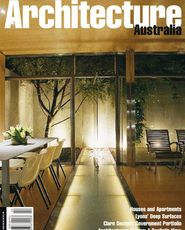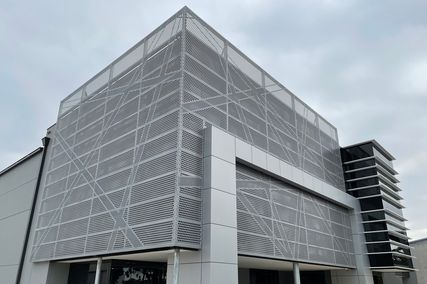

Bruce Eeles’ Mackerel Beach house. John Mainwaring’s Chapman house, Noosa.
Image:Bruce Eeles Image: Richard Stringer
Inside a Troppo-designed shed installed in the south-east corner of Adelaide’s Festival Plaza, an intriguing exhibition of 16 ‘lightweight’ Australian houses is open to patrons of this year’s arts festival. The show gives a rare opportunity to compare a variety of domestic design strategies by architects leading what’s been titled ‘new Australia style.’ Practitioners included are Rex Addison, Andresen and O’Gorman, Gregory Burgess, Clare Design, Donaldson and Warn, Russell Hall, Bruce Eeles, Grose Bradley, Ken Latona, John Mainwaring, Richard Leplastrier, Glenn Murcutt, Gabriel Poole, Max Pritchard, Peter Stutchbury and Troppo. This selection is slanted towards Queensland and Sydney and against Melbourne.
The Light/House show (sponsored by Clipsal and Steel Building Systems International) results from discussions between Professor Antony Radford of the University of Adelaide and Markku Lahti, director of the Alvar Aalto Museum in Finland. When Lahti visited Australia for the Alvar Aalto: Points of Contacttouring show four years ago, he expressed amazement about the aesthetics of contemporary Australian houses and advised Radford to organise a touring exhibition to raise international consciousness. (The Points of Contact show, travelling since 1993, is a substantial success and Light/House is intended to also go offshore in 2001.) Radford’s 16 chosen houses are shown in models, drawings and photographs, including photos of their sites. He says they have been selected to display “grammar and legibility in building … the nature of sustainability … open living and awareness of the outdoors and an informal, tolerant (and often idealised) Australian lifestyle.” In his title and texts, he has emphasised the issue of lightness, which he explains as “connections between ideas of light and house: sunlight, daylight, light-impact, light-weight, light-spirited.” However, visitors to the show will notice that it includes several conspicuously heavy houses which oppose at least some of the claimed criteria.
One example is Grose Bradley’s monumental mud brick pavilion built on a concrete slab at Carey Gully, SA: this project certainly contradicts Radford’s rationales more than the practice’s many other steel-framed houses. Another is the Thiel house by Troppo in Darwin – built in substantial masonry around a courtyard garden and again out of synch with the usual work of the firm. Also, Donaldson and Warn’s Goddard house in Perth is built of rammed earth, with one facade panelled in corrugated zincalume. Like many WA houses, it is substantial in appearance and not especially open in either layout or fenestration.
Another surprising inclusion in an exhibition titled ‘Light House’ is Greg Burgess, the Melbourne architect known for earthy structures and cave-making. His Burraworrin residence, built on a coastal site exposed to bitter Antarctic winds, uses vertical timber boards and metal panels to give monolithic expression to pods circling around a pool deck. This appears to be an accidentally light house.
Despite the questionable sub-title (exotic landscapes is a more pervasive theme here than light weight), the exhibition is an important record of some of the most distinguished houses built in Australia during the past 15 years. This phase of our architectural history has been the first to produce real aesthetic diversity – not just regional styles but originality by individuals. About 20 architects now, including many of those in the Radford show, are accomplished innovators rather than mere adapters of precedents – and that’s a serious advance for the culture.
‘Light/House: Contemporary Australian Lightweight Houses’, produced by Adelaide University with the Alvar Aalto Museum. At the Adelaide Festival Plaza, 2-19 March and in Sydney during the RAIA convention, 29 June-3 July
 Donaldson & Warn’s Goddard house in Perth. Image: Martin Farquharson
Donaldson & Warn’s Goddard house in Perth. Image: Martin Farquharson















